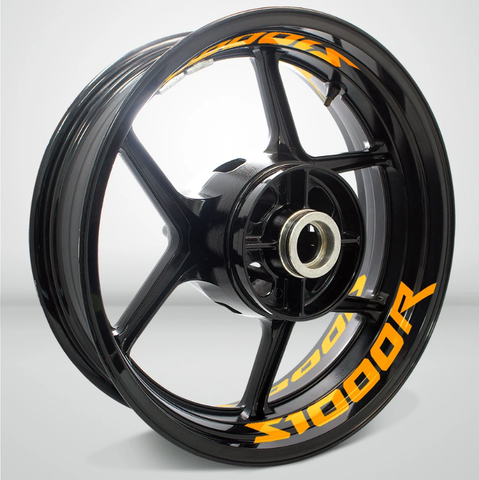
Before we begin, we’re gonna make a bold claim - laminated stickers are generally better.
So, first, let’s understand what lamination in stickers means. Lamination is the process of applying a clear protective layer onto printed vinyls. It is more commonly done as a finishing touch to enhance the sticker in terms of durability and visibility. Laminated stickers are better protected and the graphics remain intact over time. Allow us to elaborate further why you need to opt for lamination.
Laminate is an important component in any high quality sticker work and even more so when considering a motorcycle wrap job. In fact, it is absolutely essential on stickers that will be exposed to the outdoor elements such as wind, rain, and shine. The laminate layer adds thickness that strengthens and increases the rigidity of the product, subsequently reinforcing its structure. It also protects and extends the lifespan of the printed materials. A well laminated sticker is even durable against high-pressure wash and strong chemical cleaners. Give yourself peace of mind knowing that you can send your bike for cleaning, even frequently, without damaging your stickers.
This is especially true with MX graphics as these bikes are put to test in harsh environments which makes them more susceptible to abrasion, especially with the rider’s suit and equipment constantly coming in contact and rubbing against them. On top of that, MX riders ride on terrains that collect a lot of dirt, and a lot of high-pressure washing is usually needed. But not to worry, laminate is there to save the day.
Additionally, laminate protects your stickers from the effects of UV light, preserving the color vibrance of the graphics over a long period of time. Sunlight can be very damaging to stickers, especially when exposed for long hours.
Aside from protecting it well, laminate enhances the physical outlook of the product. Laminate is transparent, but it improves the appearance of the sticker by giving it a more vibrant look with deeper and brighter colors. And because it is transparent, there is no weird tint or blemishing of the original colors. It’s an easy upgrade, but makes the sticker look a lot more premium. Also, lamination comes in various finishes, such as:
- Gloss - the graphics stand out with better color contrast. Glossy finishing is a preference because it gives stickers a glowy shine.
- Matte - gives the graphics a more mellow and softer touch. It improves readability of graphics with writing. Not for those who like shiny stickers.
Graphic vinyls that have been laminated have better strength and stiffness, making them easier to apply with a lower potential of making mistakes. A well laminated vinyl will not fold, have wrinkles, or creases. Also, because it makes the final product thicker, it prevents the vinyl from being overstretched or torn during installation. Overstretched stickers will damage the adhesive, causing the stickers to peel from the edges. You definitely don’t want that. Here are 5 steps to properly apply your sticker.
Bonus Point: When is Lamination Not Required?
For most cases, lamination is a no brainer, but it’s not always necessary. Graphics that are intended to be used only temporarily do not need to be laminated. In general, non-laminated vinyls are strong enough to withstand short term usage and UV exposure without the print quality being affected. Sometimes, it may even last up to a few weeks without any visible damage.
The different printing methods used can determine whether lamination is necessary. For example, Ultraviolet (UV) printing - a unique method of digital printing utilising UV light to dry or cure ink almost instantly once it hits the printing material. In this case, lamination is not necessary to preserve the print or color quality.
Another example is cut-stickers. Cut-stickers require no lamination to increase their strength and durability. This is due to the nature of how the material is made. Lamination might actually make the stickers a little too thick, making the application process difficult on an uneven surface.
Over the years, digital printing methods have evolved and improved significantly. The printing methods are now able to produce quality graphics that are outdoor-durable, and while some may still need lamination, many others don’t. Hence, it's important to understand the use of the stickers and the type of application to help you decide if lamination is necessary.

